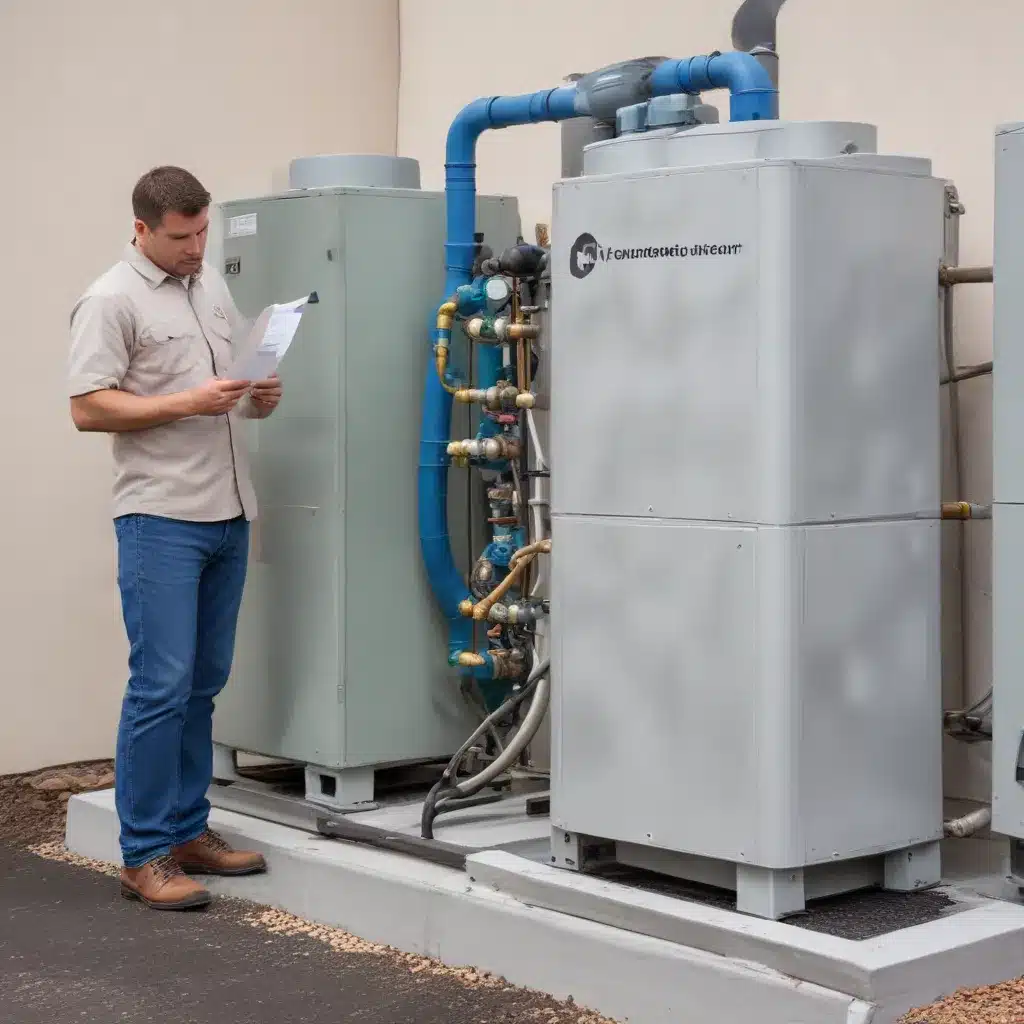
The HVAC and refrigeration industry is undergoing a transformative shift, driven by evolving environmental regulations and a growing emphasis on sustainability. As the phase-down of high-Global Warming Potential (GWP) refrigerants gathers momentum, facility managers, HVAC technicians, and environmental compliance professionals must navigate a complex landscape of new requirements and best practices. Staying ahead of the compliance curve is not just a matter of regulatory adherence – it’s a strategic imperative that can unlock operational efficiencies, cost savings, and a robust environmental stewardship reputation.
Regulatory Frameworks: Evolving Environmental Mandates
At the heart of this industry-wide transformation are the Environmental Protection Agency (EPA) regulations, which aim to drive the transition towards more eco-friendly refrigerant alternatives. The American Innovation and Manufacturing (AIM) Act, finalized in 2024, outlines a phased approach to phasing down the production and use of high-GWP refrigerants like R-410A, while incentivizing the adoption of low-GWP options like R-454B and R-32.
Parallel to these federal guidelines, states like California have implemented their own stringent requirements, such as the Climate Corporate Data Accountability Act (SB 253) and the Greenhouse Gases: Climate-Related Financial Risk (SB 261) bill. These rules mandate comprehensive greenhouse gas emissions reporting and climate-related financial risk disclosure for large businesses operating within the state.
Industry Trends: Balancing Sustainability and Profitability
As the regulatory landscape evolves, the HVAC and refrigeration industry is responding with a renewed focus on sustainability. Businesses are increasingly recognizing the need to align their operations with environmental stewardship, driving the adoption of low-GWP refrigerants, reclaimed refrigerant usage, and recovery and reclamation programs.
Simultaneously, technological advancements are transforming the industry, empowering HVAC professionals with innovative tools and solutions. From wireless digital manifolds and micron gauges to non-sparking vacuum pumps and recovery machines, these cutting-edge products are designed to enhance efficiency, improve leak detection, and streamline compliance management.
Compliance Essentials: Mastering the New Landscape
To navigate this evolving landscape, HVAC and refrigeration professionals must be well-versed in the compliance essentials. This includes understanding the nuances of refrigerant selection, implementing rigorous record-keeping and reporting protocols, and ensuring that their technicians are properly trained and certified.
Refrigerant Selection: Prioritizing Low-GWP Alternatives
The advent of low-GWP refrigerants, such as R-454B and R-32, has become a central focus for the industry. As the phase-down of high-GWP options like R-410A accelerates, facility managers must carefully evaluate the performance, safety, and environmental impact of these new refrigerant blends. Proactive planning and collaborating with HVAC equipment manufacturers can help ensure a smooth transition to these more sustainable alternatives.
Record-Keeping and Reporting: Ensuring Transparency
Robust record-keeping and reporting are critical components of compliance. This includes comprehensive leak detection and monitoring to identify and address any refrigerant losses, as well as adherence to mandatory reporting requirements set forth by the EPA and state-level authorities. Leveraging refrigerant management software can streamline these administrative tasks, providing real-time visibility into refrigerant usage, inventory, and regulatory compliance.
Training and Certification: Empowering HVAC Professionals
Ensuring that HVAC technicians are properly trained and certified is essential for navigating the new compliance landscape. From understanding the unique handling and servicing requirements of A2L refrigerants to mastering the use of specialized tools and equipment, ongoing education and skills development are key to maintaining a competent and compliant workforce.
Mitigating Compliance Risks: Proactive Strategies
The consequences of non-compliance can be severe, with hefty fines, operational disruptions, and reputational damage all potential outcomes. To mitigate these risks, HVAC and refrigeration businesses must proactively assess their vulnerabilities and implement robust compliance strategies.
Risk Assessment: Identifying Vulnerabilities
Conducting a comprehensive risk assessment is the first step in building a resilient compliance program. This involves carefully evaluating the organization’s refrigerant management practices, identifying potential points of failure, and developing contingency plans to address any gaps or weaknesses.
Proactive Compliance Strategies: Staying Ahead of the Curve
Staying informed and agile in the face of regulatory changes is crucial. HVAC and refrigeration professionals must actively monitor updates from the EPA, industry associations, and compliance experts to ensure their practices remain aligned with the evolving compliance landscape. Implementing a proactive compliance program, complete with regular audits, employee training, and process optimization, can help organizations stay ahead of the curve and avoid costly penalties.
Navigating the Changing Industry: Collaboration and Innovation
As the HVAC and refrigeration industry navigates this transformative period, collaboration and innovation will be key to success.
Collaborative Partnerships: Leveraging Industry Resources
Fostering collaborative partnerships with regulatory agencies, industry associations, and technology providers can provide HVAC and refrigeration professionals with the support and resources needed to navigate the compliance landscape. By engaging with these stakeholders, businesses can gain valuable insights, access to the latest compliance best practices, and opportunities for knowledge-sharing.
Embracing Innovation: Optimizing System Efficiency
The integration of cutting-edge technologies, such as wireless digital manifolds, non-sparking vacuum pumps, and advanced refrigerant recovery and reclamation solutions, can help HVAC and refrigeration businesses optimize their operations, improve system efficiency, and enhance their compliance capabilities. By embracing these innovations, organizations can not only meet regulatory requirements but also drive cost savings and environmental sustainability.
As the HVAC and refrigeration industry continues to evolve, staying ahead of the compliance curve is essential for maintaining a competitive edge and securing a sustainable future. By mastering the essentials of refrigerant compliance, mitigating risks, and leveraging collaborative partnerships and innovative technologies, HVAC and refrigeration professionals can navigate this changing landscape with confidence and position their businesses for long-term success. For more information on Airgas Refrigerants’ comprehensive suite of compliance and sustainability solutions, visit https://www.airgasrefrigerants.com.

